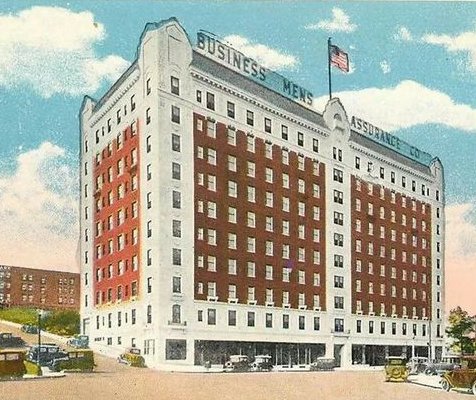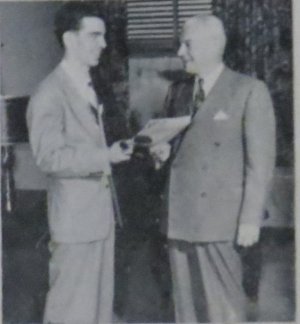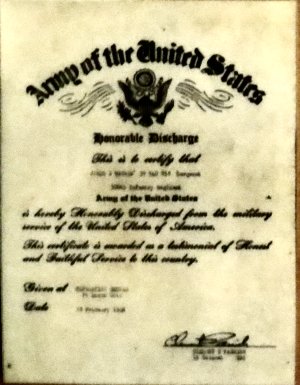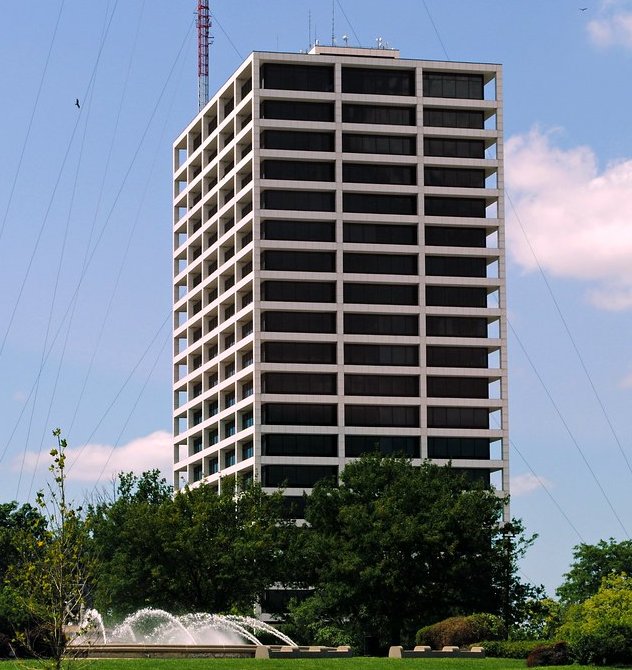I found an album with my dad’s name engraved in gold on the inside front cover. It contained thirty-five snapshots of celebrations at my dad’s employer, Business Men’s Assurance (BMA), an insurance company based in Kansas City1. This brought to … Continue reading
I found an album with my dad’s name engraved in gold on the inside front cover. It contained thirty-five snapshots of celebrations at my dad’s employer, Business Men’s Assurance (BMA), an insurance company based in Kansas City1. This brought to mind the fact that I had written very little about my dad’s business career.
At some point in 1982 I received a very surprising telephone call from my dad. He had decided to retire—at the age of 58! His employer for over thirty years1 was downsizing by offering attractive severance packages to its employees. He helped to design the program, and when the president of the company learned that he was on the list of people taking early retirement, he protested, “But Jim, this wasn’t designed for people like you.”
My dad told me that he replied, “True, but it didn’t exclude me either.”
When did my dad start working at BMA? I remember thinking at the time of his death in 2011 that his life was perfectly divisible into three units of twenty-nine years each. However, that would mean that he started work in 1953. That cannot be true. I have recently discovered proof that he was employed there in 1950. Furthermore, I know that I spent a lot of the time in the hospital in my first year of life. If he had not had a good insurance policy—and BMA employees had excellent policies—I doubt that my parents could have afforded the hospital bills. Finally, I doubt that John Cernech would have allowed his only daughter to marry a guy without a job. So, I think that Jim probably started working at BMA before September of 1947.
I have no idea what he did between the time of his discharge from the army as a sergeant in the 300th Infantry Regiment on February 18, 1946, and his wedding on December 1, 1947. He hinted to me once that my mom and her mom, Clara Cernech, saved him from going down a really bad path during this period.
What did my dad do at BMA? I have never been too certain. He probably started at the bottom. He finished high school in 1942, but, despite the fact that he certainly qualified for veterans’ benefits, to my knowledge he never took a college course.
In 1951 he was the president of the KEO (“Know Each Other”) Club at BMA. A photo of him presenting a birthday greeting to the president of the company appeared in the company’s newspaper in March. I think that he also told me that he played for one summer on the company’s baseball or soccer team. He had a first baseman’s mitt that he picked up somewhere.
Maybe he joined BMA’s Sales Department in 1953, and he told me that he had spent 29 years there. That would make more sense. The Sales Department managed the company’s salesmen. I think that what my dad mostly did was write materials used by the company. I know that at one time his title was Vice-president of Public Relations. I also know that during the last few years he spent most of his time writing speeches for the president of the company, Bill Grant. He hated this assignment. Mr. Grant often spoke against Medicare, and my dad understood what a good program it was.
I remember the quite a few names mentioned by my dad. Some of these people I probably met once or twice, but I have seen none of them since high school. Here is the list: John Saylor (his boss) and his son Bill, Bernie Johnson, C.R. Moreland, Lyle Hopkins, Kenny Higdon, Bill Purinton, Roy Uto. I remember that dad’s secretary—or at least one of his secretaries—was named Jeanette. I also remember a woman who attended his wake in 2011 and appeared in some of the photos below. I think that her name was Mary Jean or something like that. If I ever knew her last name, I have forgotten it.2
Here are the photos in the same order that they were in the album. There are two sets of photos. The first fifteen were taken at a banquet at a huge round table at BMA Tower. The second set of twenty were evidently shot on a different occasion in and around my dad’s office. I have added captions when I knew anything about them.
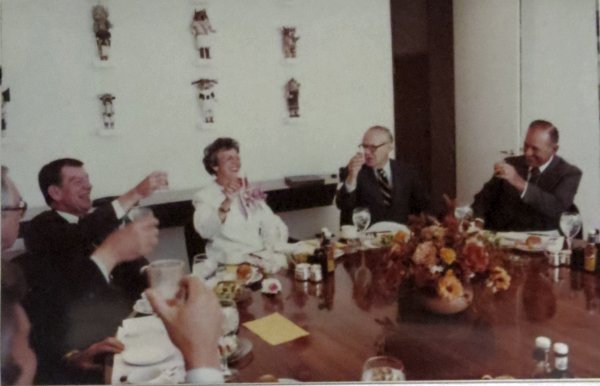
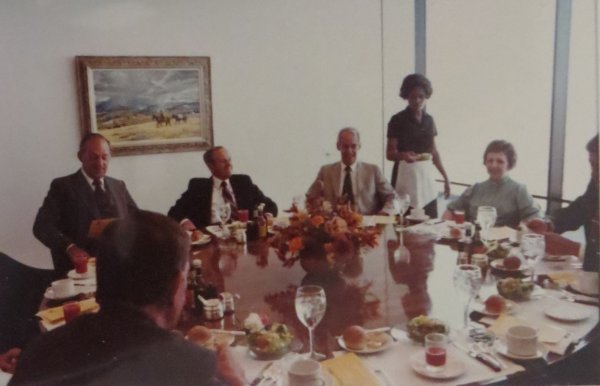
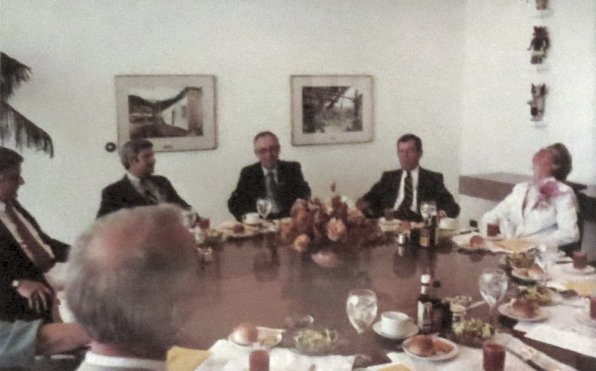
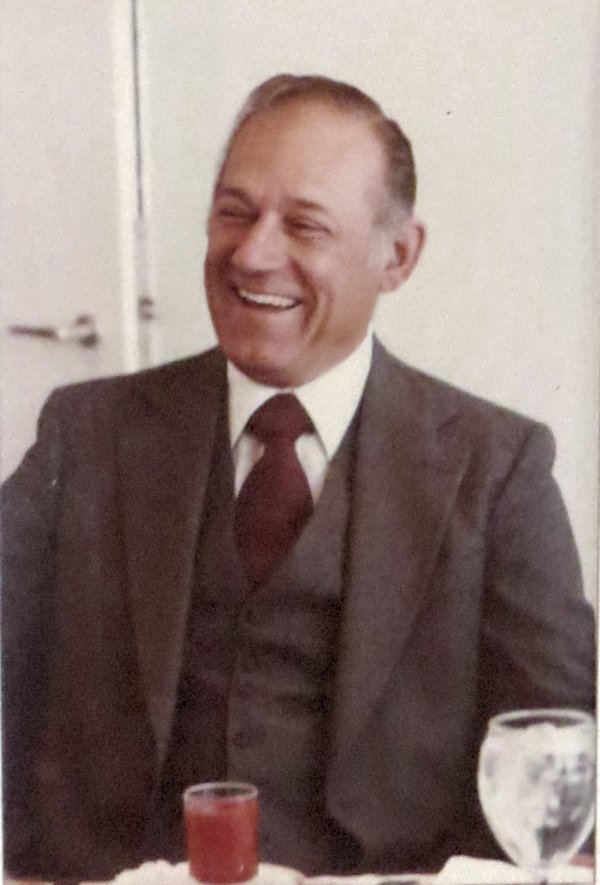
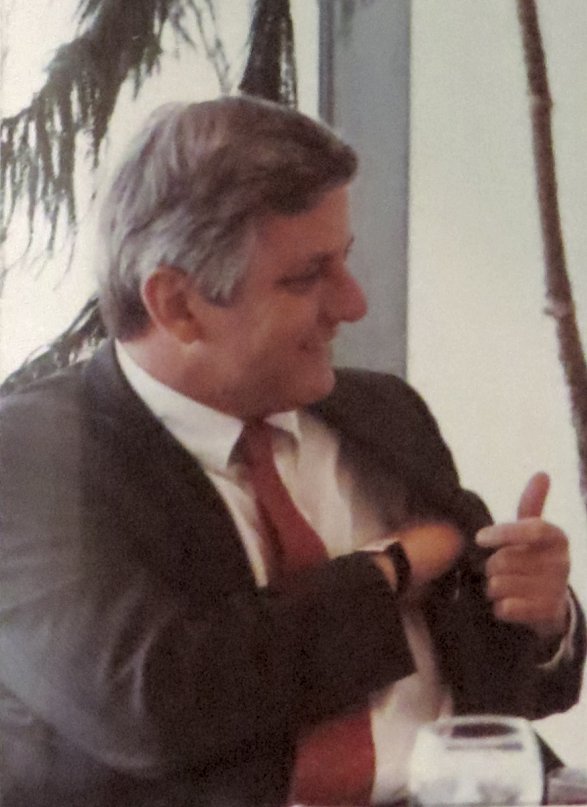
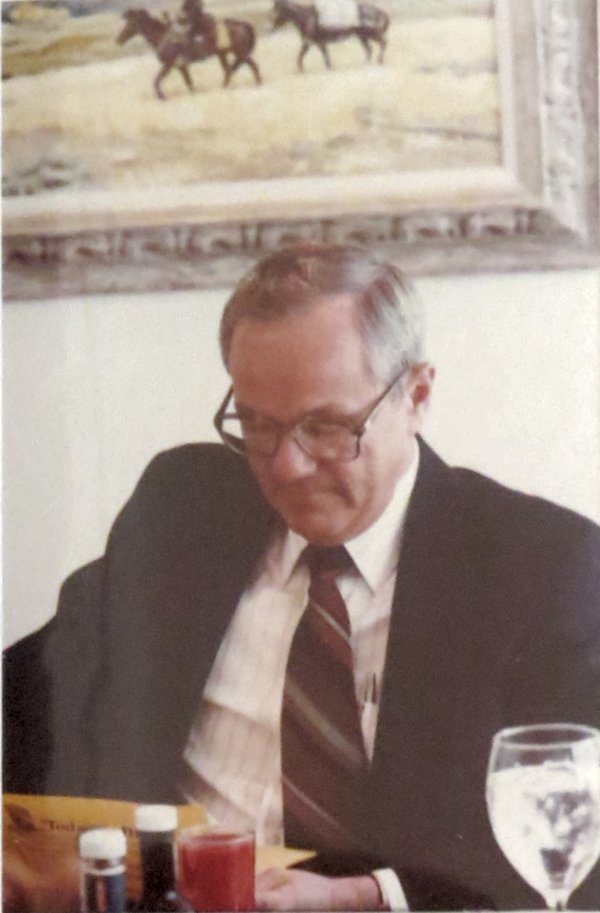
I think that this was either Bill Grant of John Saylor.
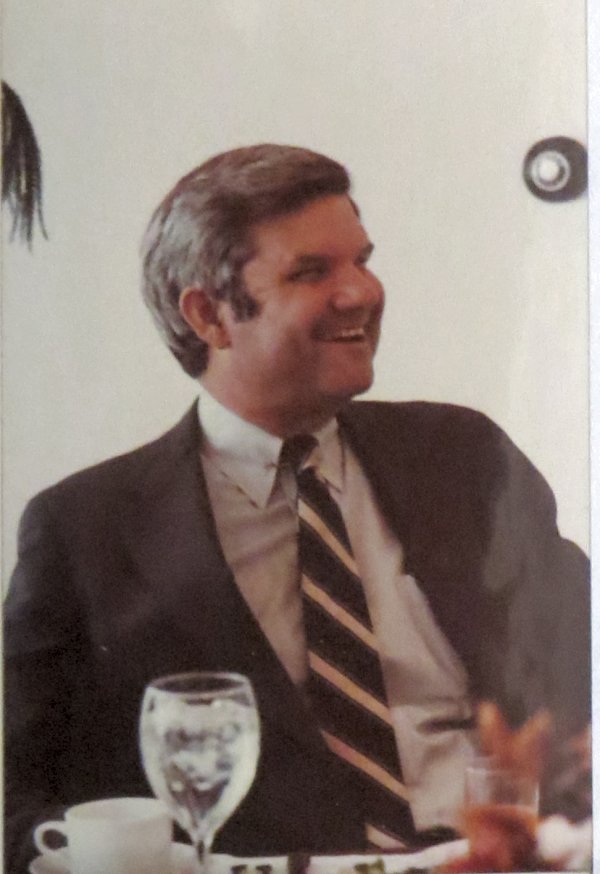
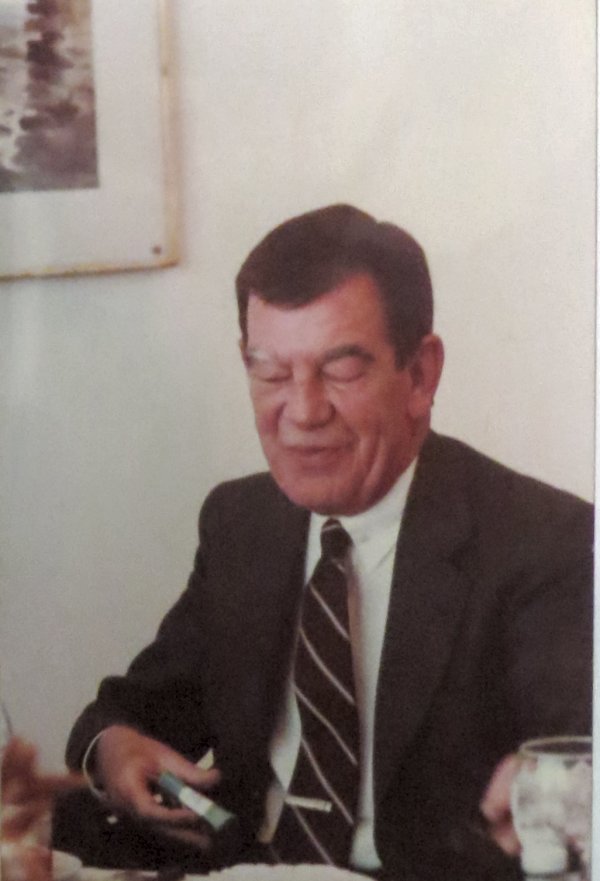
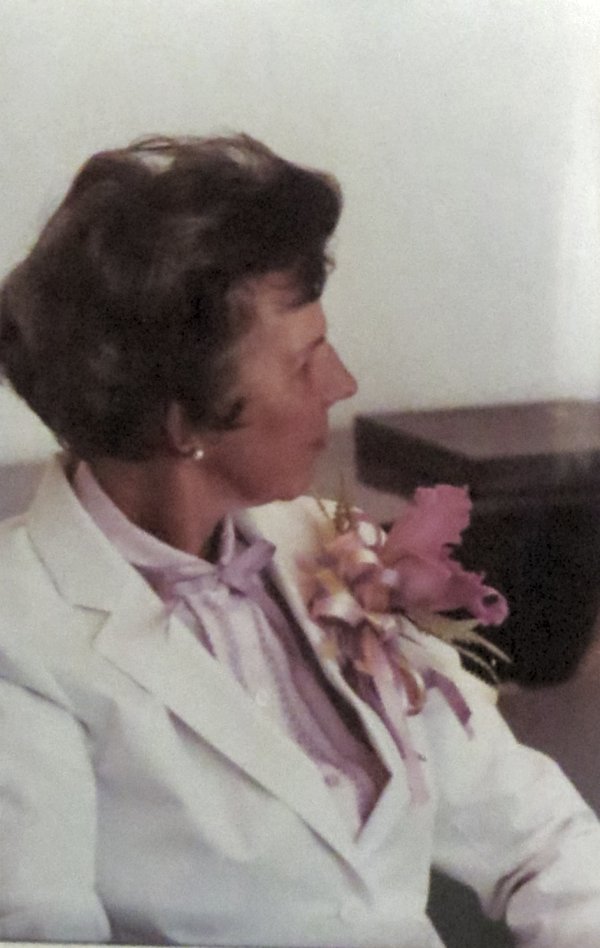
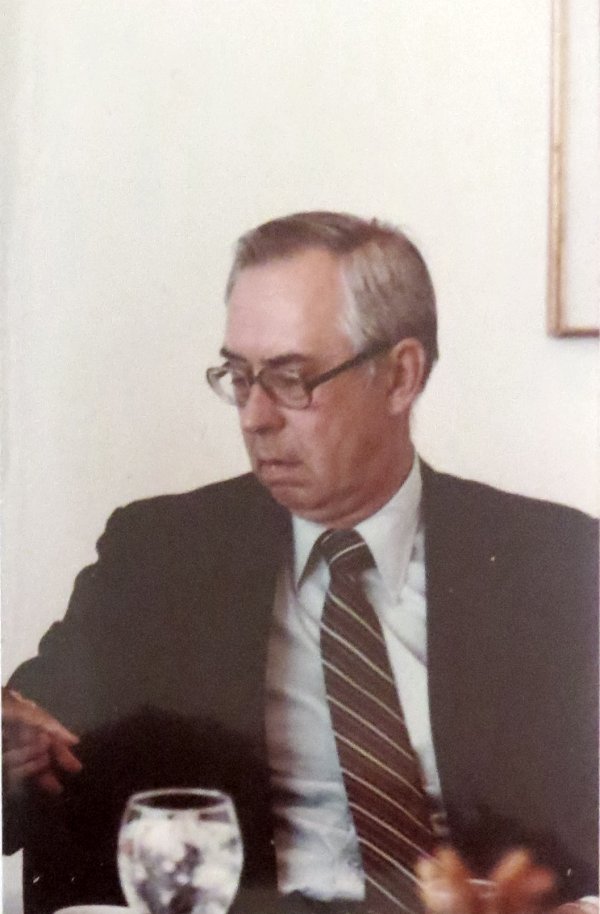
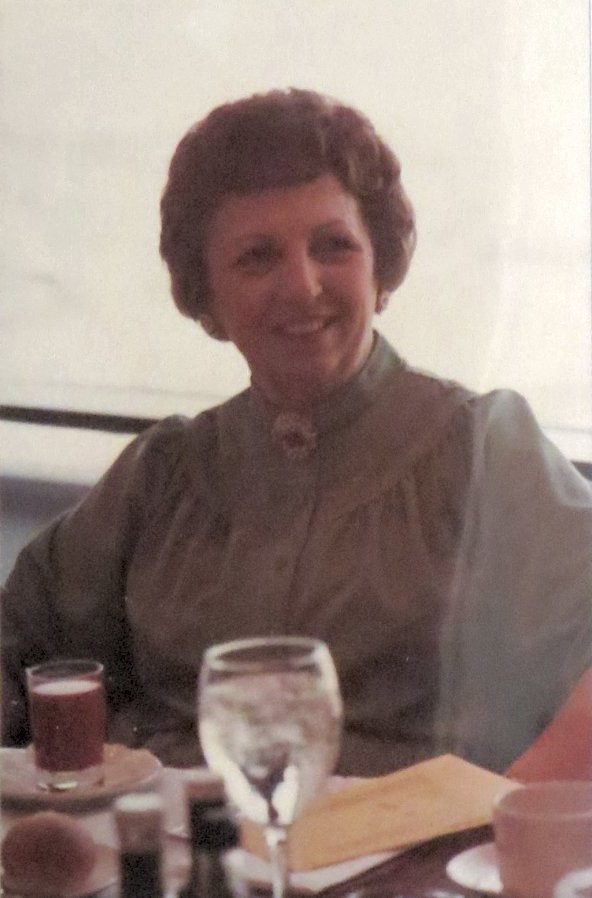
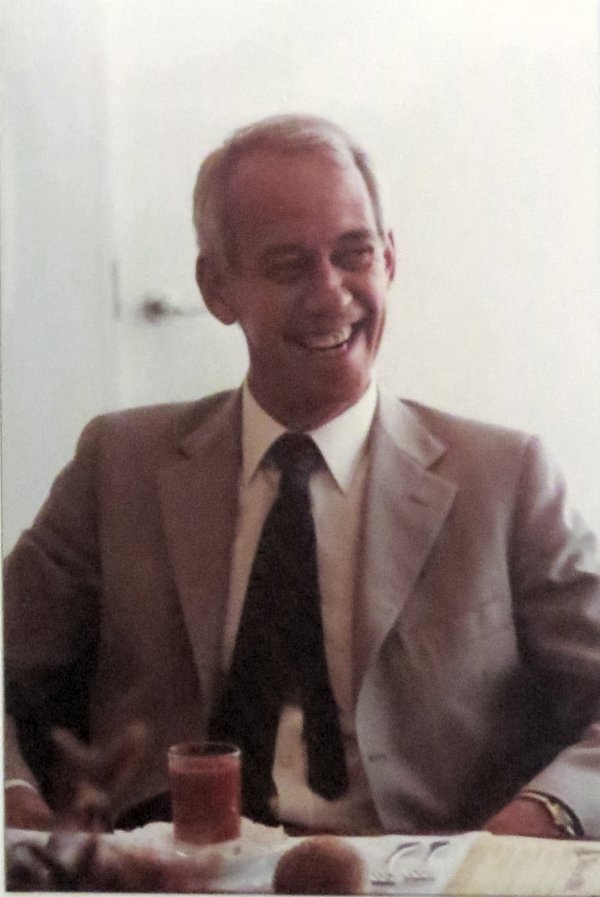
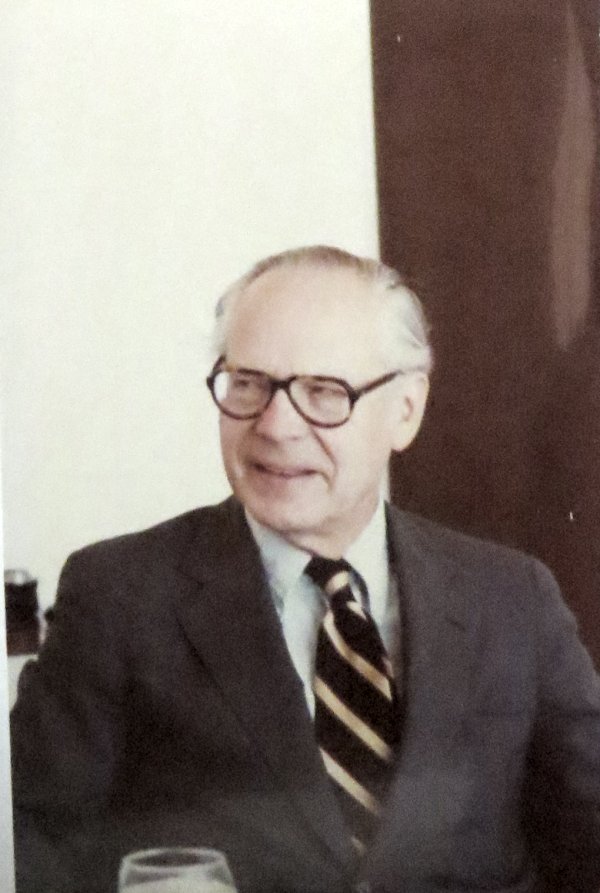
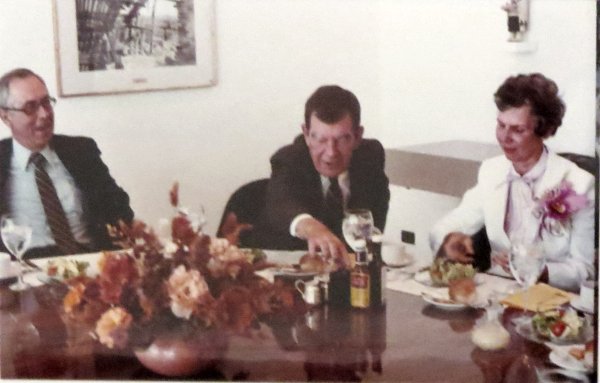
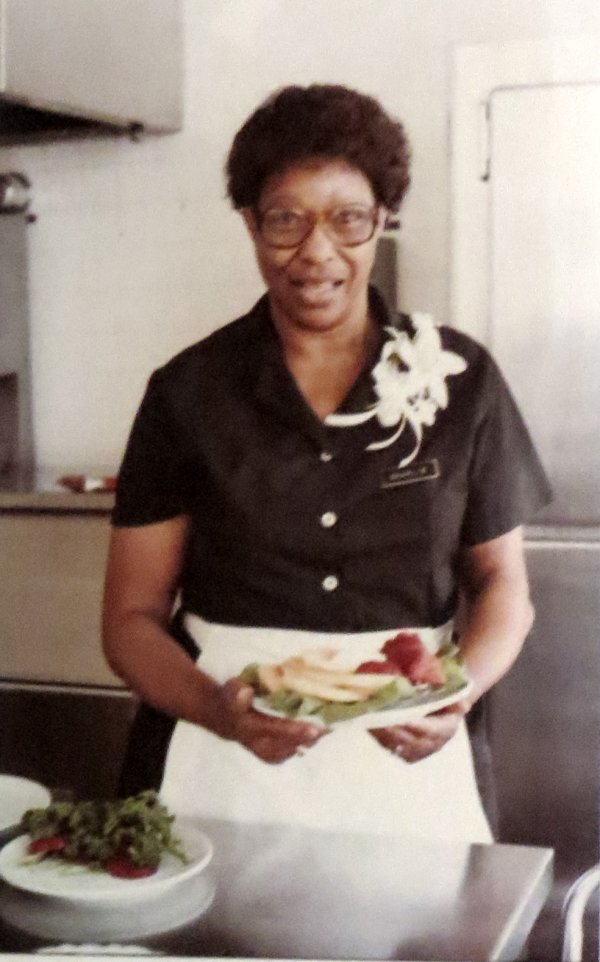
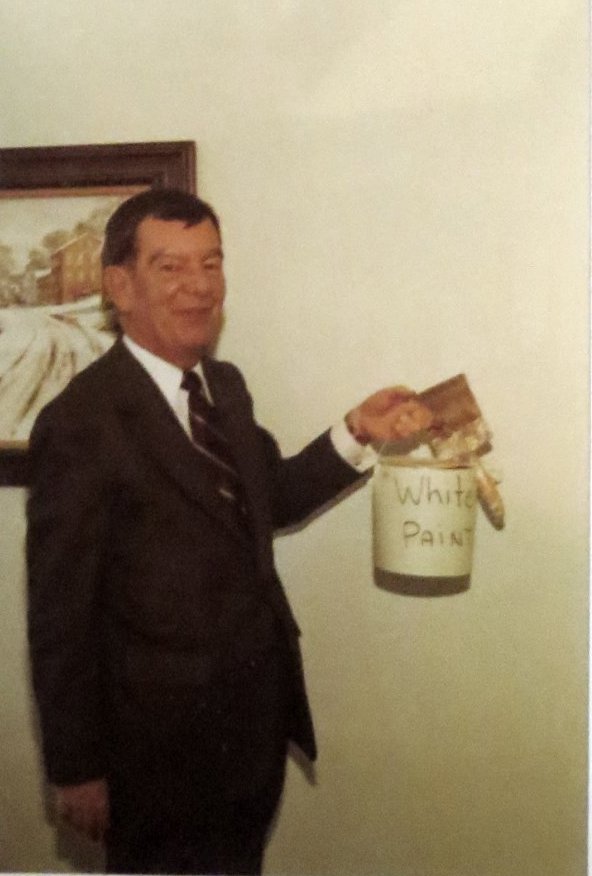
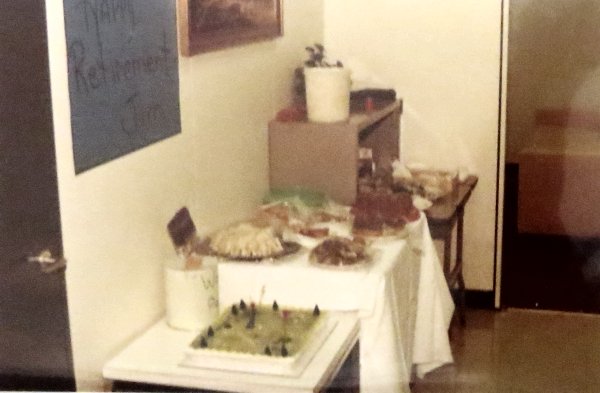
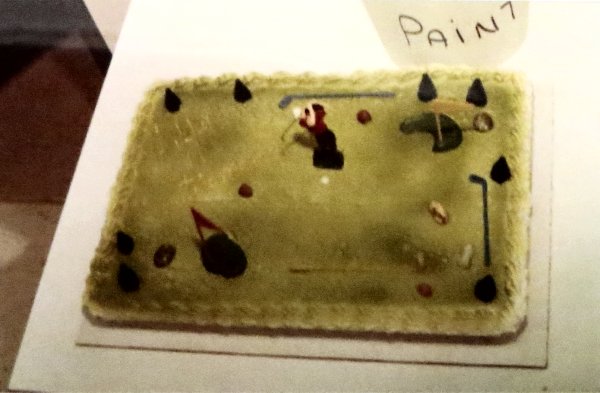
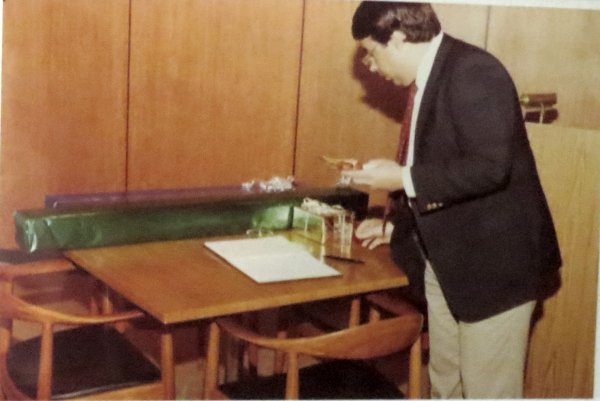
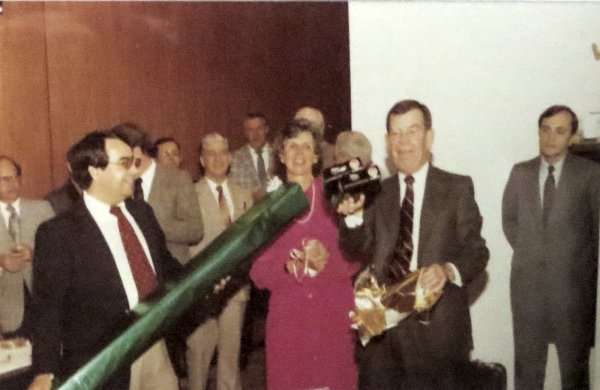
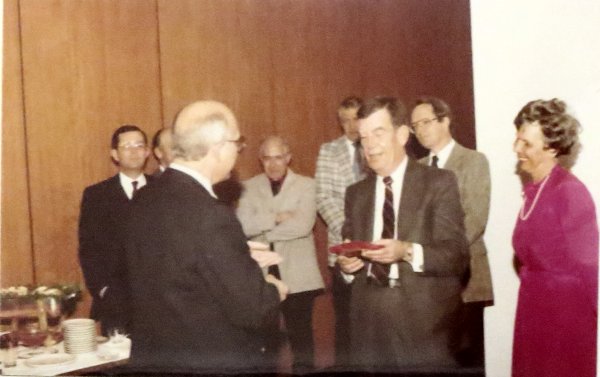
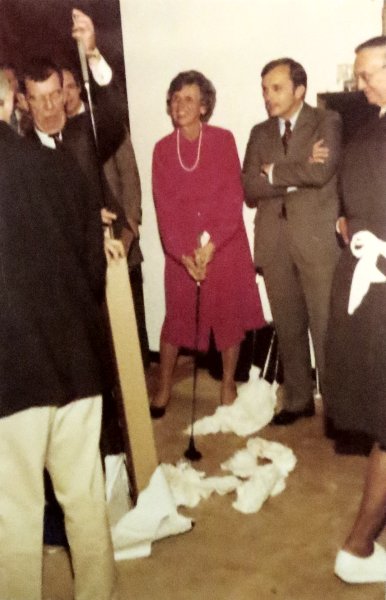
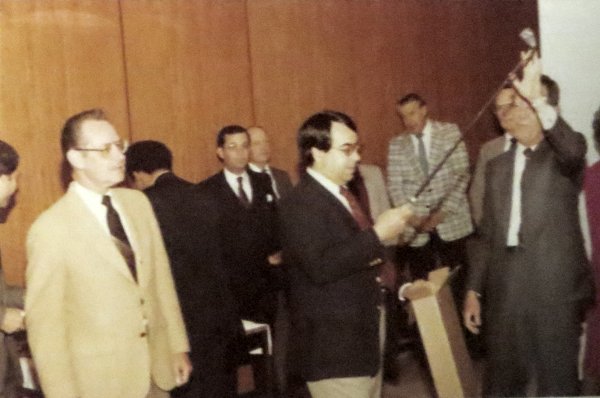
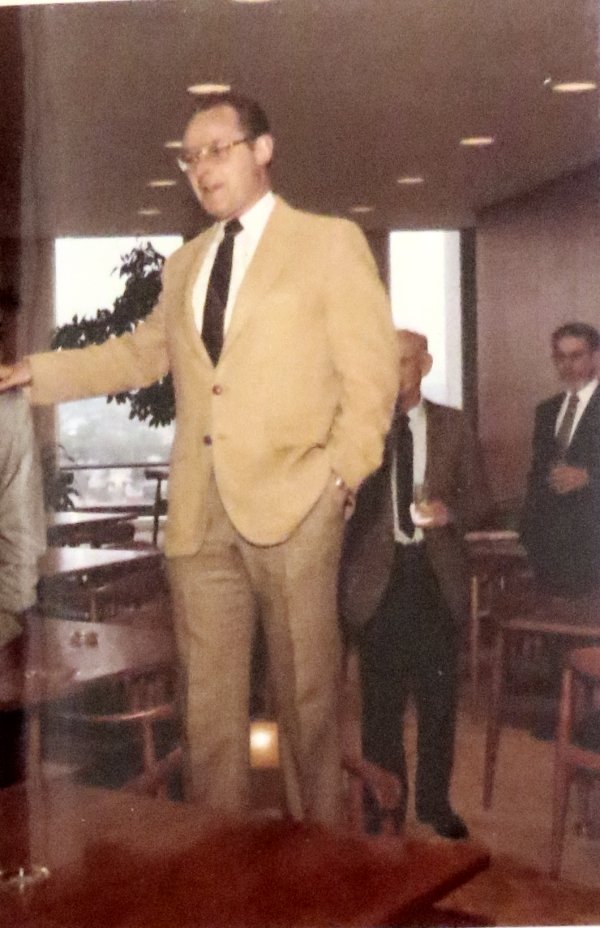
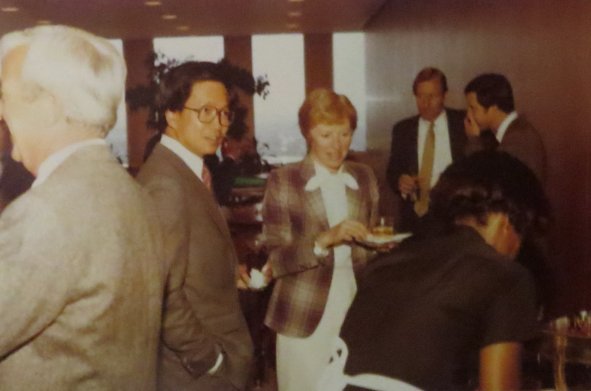
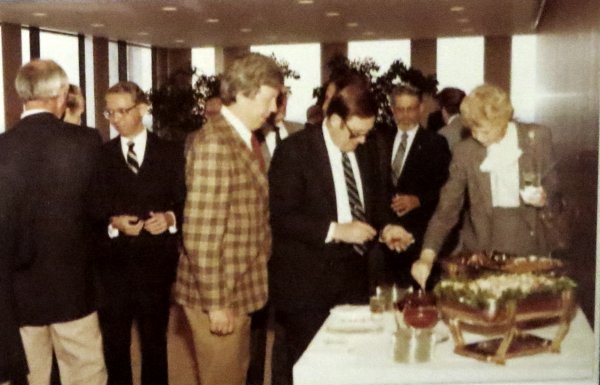
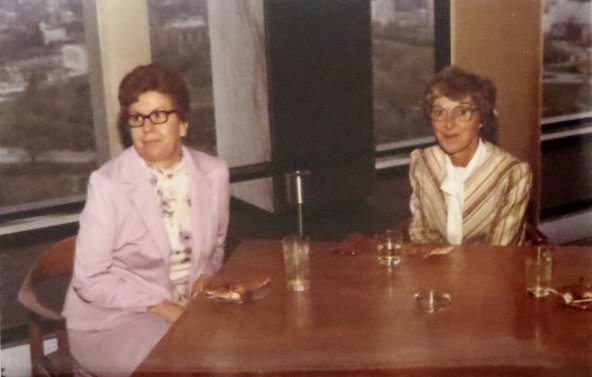
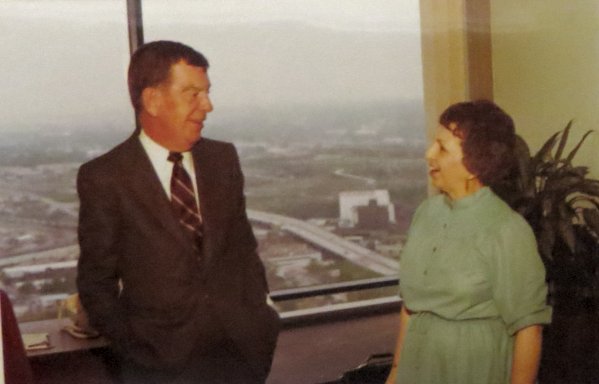
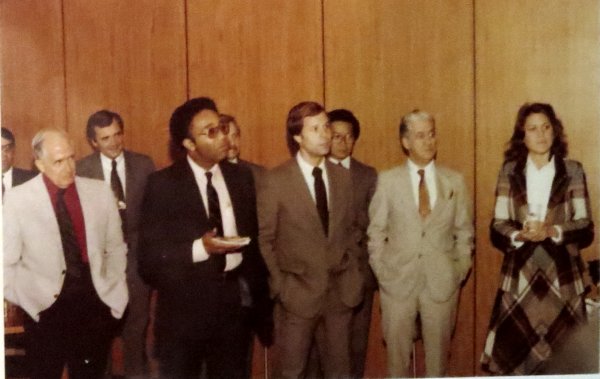
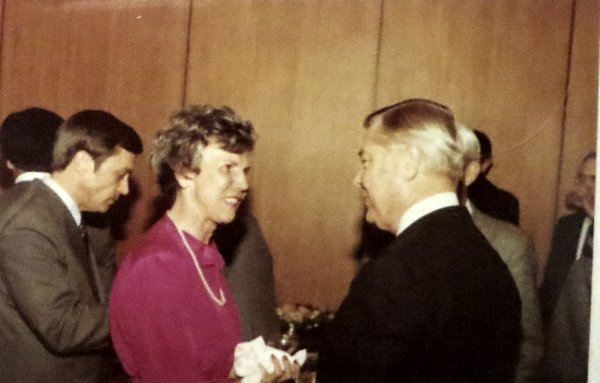
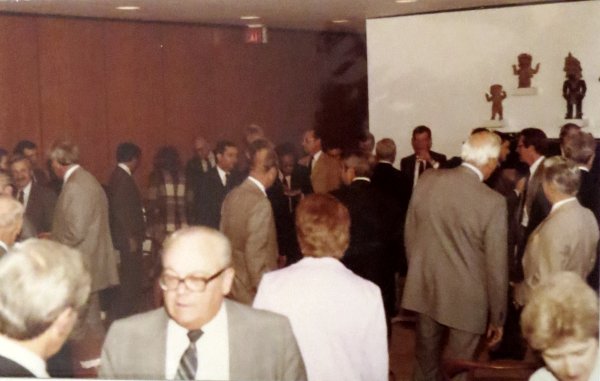
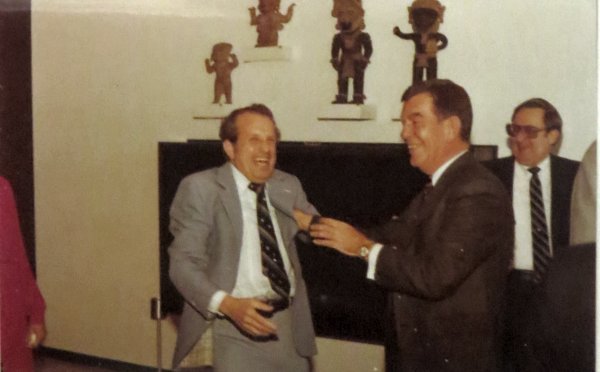
1. The insurance operations of BMA (the A originally stood for Accident Insurance), which included my dad’s pension and health insurance, was sold to Assicurazioni Generali in 1990. AG sold it to the Royal Bank of Canada in 2009;
2. I spent several hours on the Internet trying to discover what became of the people on this list, but I was unsuccessful.

